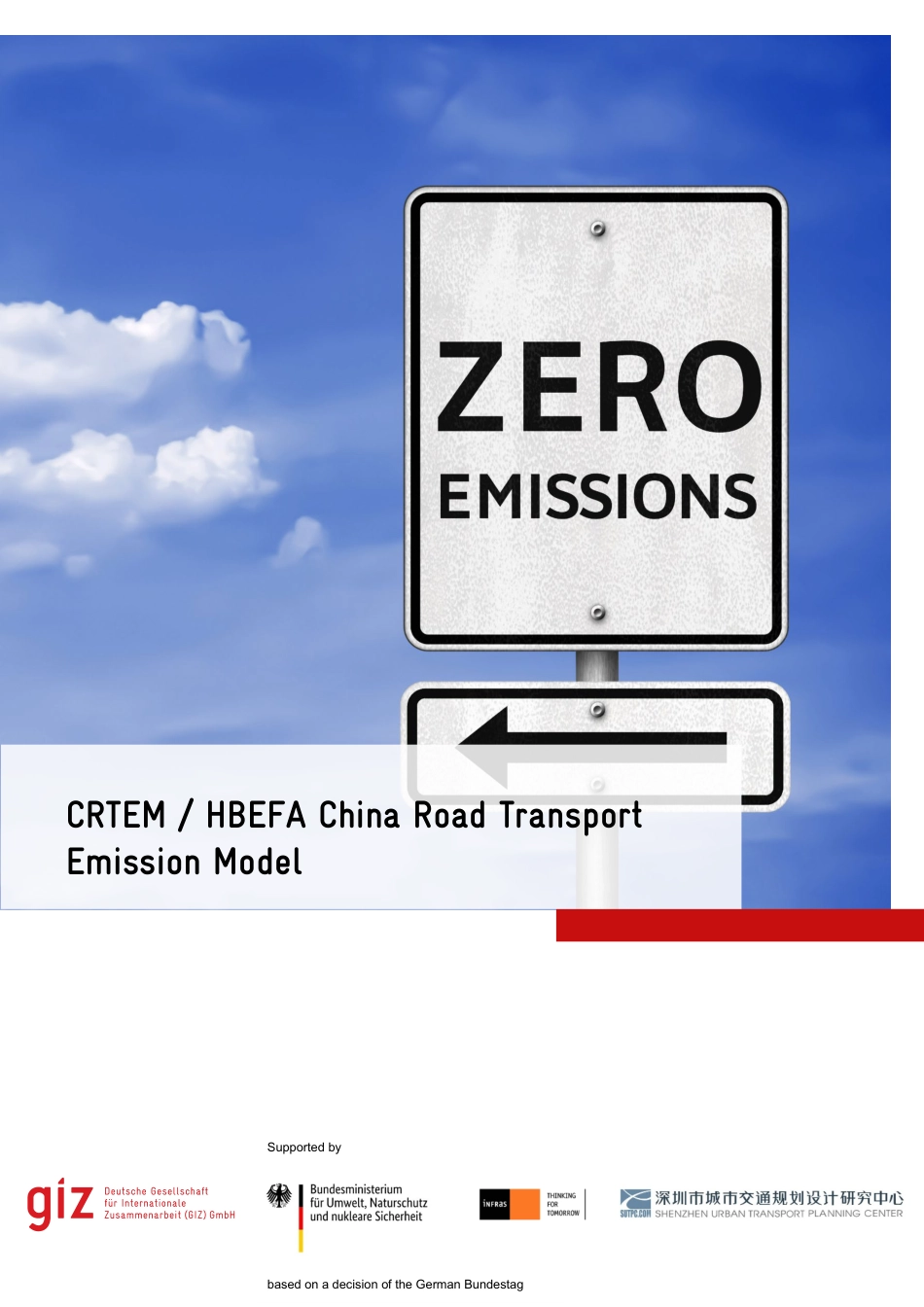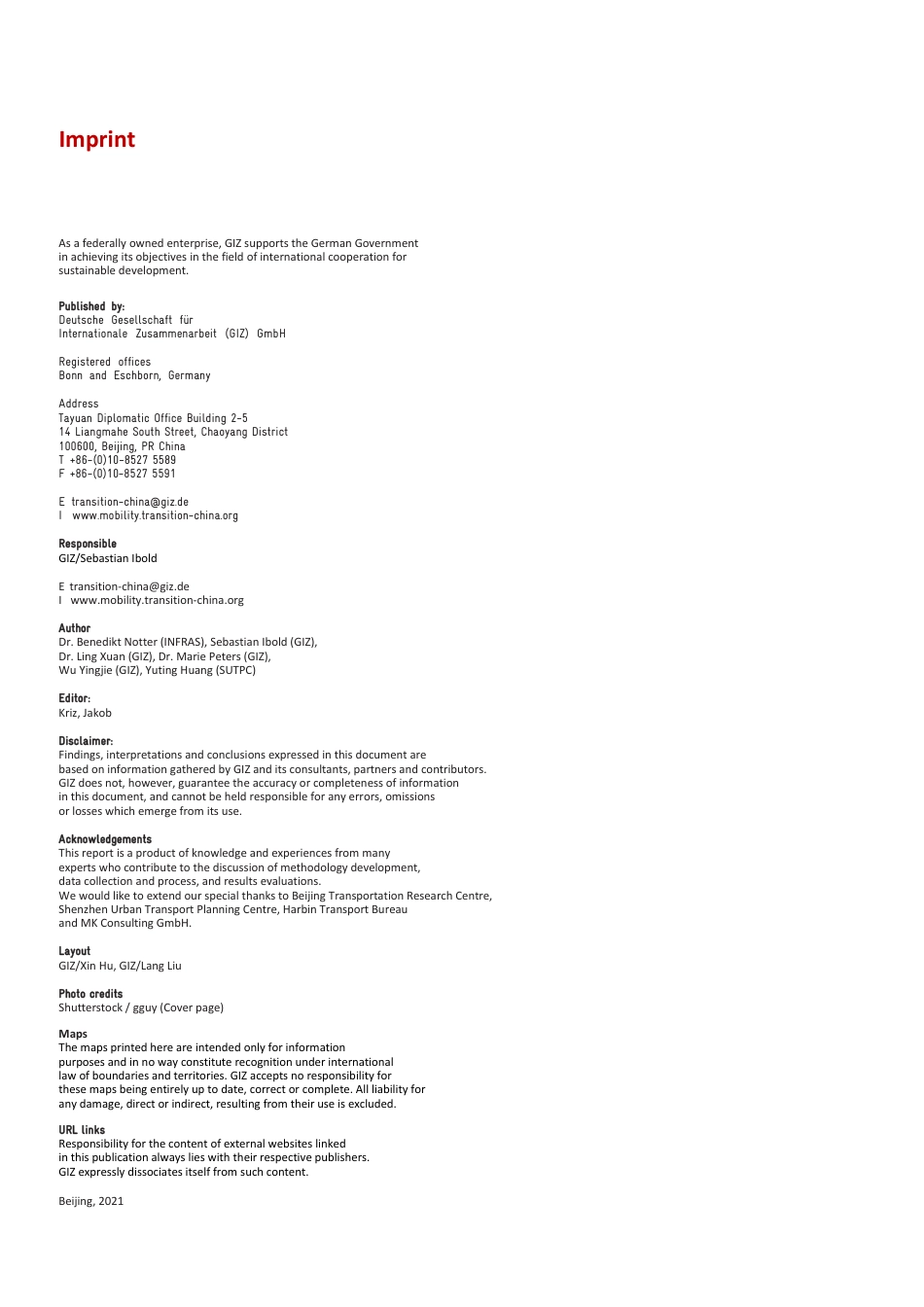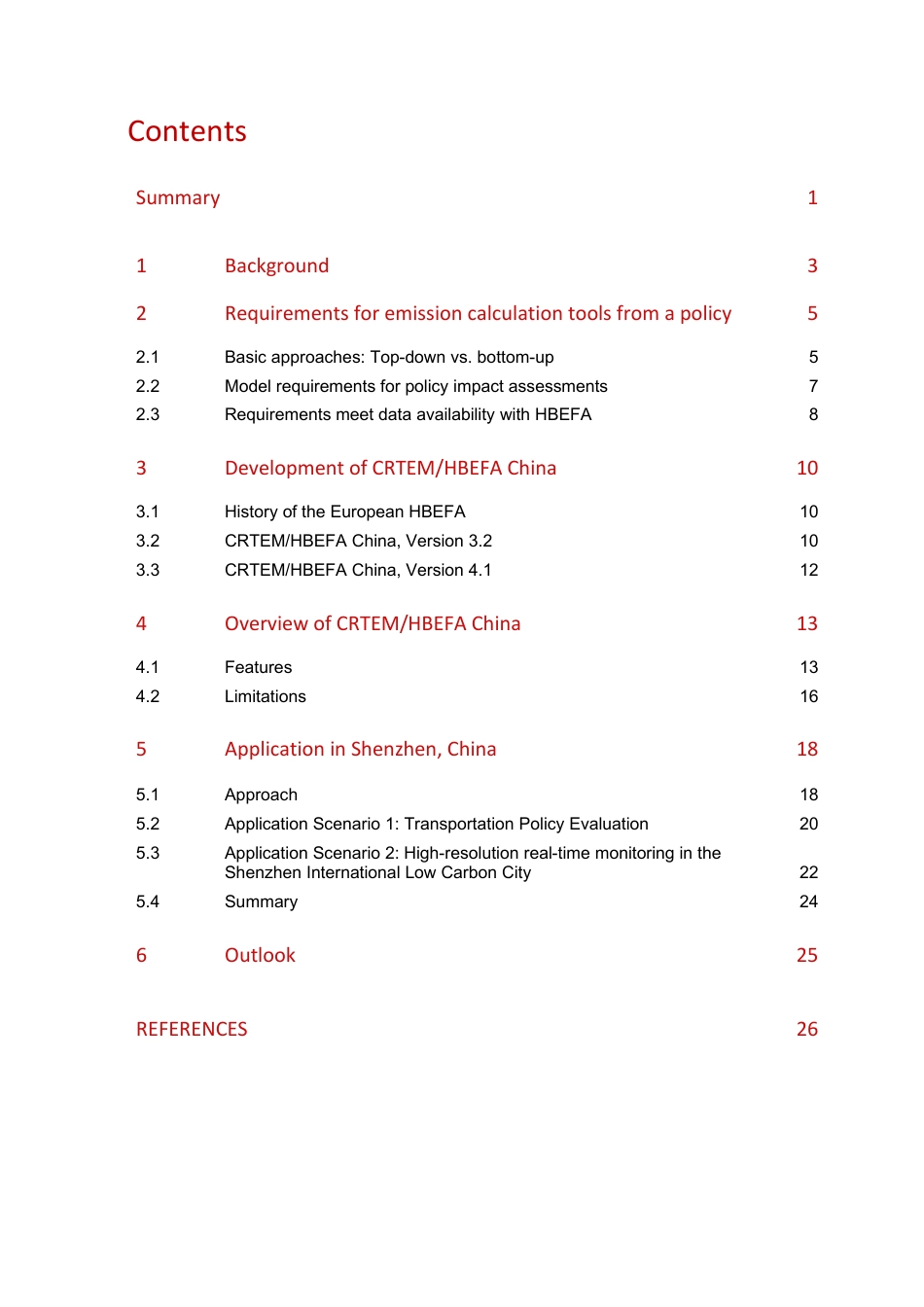CRTEM / HBEFA China Road Transport Emission Model Supported by based on a decision of the German Bundestag Imprint As a federally owned enterprise, GIZ supports the German Government in achieving its objectives in the field of international cooperation for sustainable development. Published by: Deutsche Gesellschaft für Internationale Zusammenarbeit (GIZ) GmbH Registered offices Bonn and Eschborn, Germany Address Tayuan Diplomatic Office Building 2-5 14 Liangmahe South Street, Chaoyang District 100600, Beijing, PR China T +86-(0)10-8527 5589 F +86-(0)10-8527 5591 E transition-china@giz.de I www.mobility.transition-china.org Responsible GIZ/Sebastian Ibold E transition-china@giz.de I www.mobility.transition-china.org Author Dr. Benedikt Notter (INFRAS), Sebastian Ibold (GIZ), Dr. Ling Xuan (GIZ), Dr. Marie Peters (GIZ), Wu Yingjie (GIZ), Yuting Huang (SUTPC) Editor: Kriz, Jakob Disclaimer: Findings, interpretations and conclusions expressed in this document are based on information gathered by GIZ and its consultants, partners and contributors. GIZ does not, however, guarantee the accuracy or completeness of information in this document, and cannot be held responsible for any errors, omissions or losses which emerge from its use. Acknowledgements This report is a product of knowledge and experiences from many experts who contribute to the discussion of methodology development, data collection and process, and results evaluations. We would like to extend our special thanks to Beijing Transportation Research Centre, Shenzhen Urban Transport Planning Centre, Harbin Transport Bureau and MK Consulting GmbH. Layout GIZ/Xin Hu, GIZ/Lang Liu Photo credits Shutterstock / gguy (Cover page) Maps The maps printed here are intended only for...



